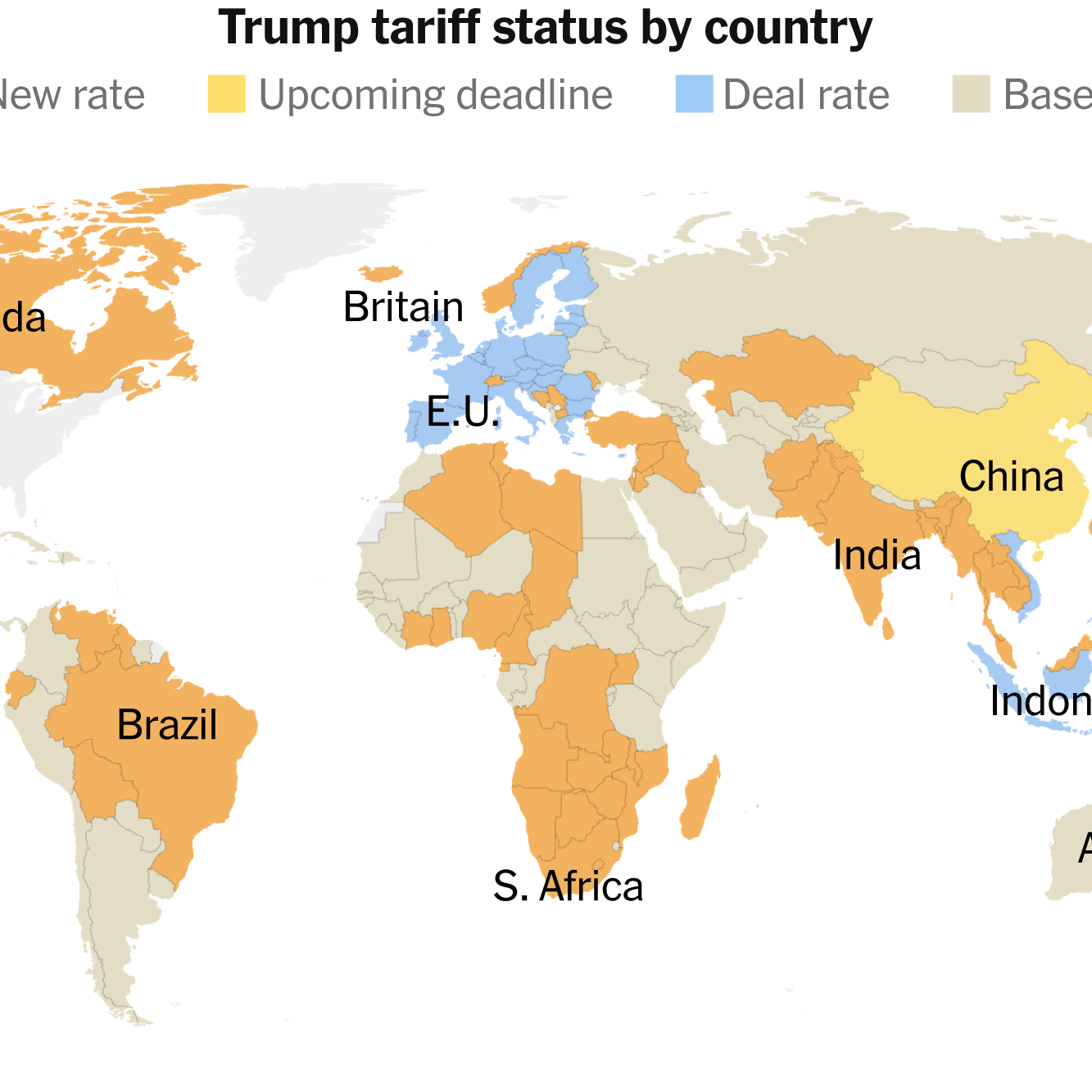World
Trump Imposes New Tariffs, Escalating Global Trade Tensions

President Donald Trump implemented significant new tariffs on over 90 countries starting July 7, 2023, marking a dramatic escalation in the ongoing global trade conflict. This move has raised the average effective tariff rate in the United States to its highest level in nearly a century, significantly impacting the U.S. economy and international trade relationships.
The latest round of tariffs, announced through a series of executive orders, includes duties that range from 15 percent on imports from countries like Bolivia and Ecuador to 50 percent on select goods from Brazil. Trump has framed these tariffs as necessary measures to rectify what he perceives as unfair trade practices and to boost domestic manufacturing.
While the tariffs are expected to generate substantial revenue, with approximately $152 billion collected through July, the consequences are already being felt across various sectors. Rising costs for essential foreign components have led numerous businesses to express concerns over their ability to sustain operations amid increasing expenses.
Inflation has also begun to rise, with prices for appliances, clothing, and furnishings increasing in June. Economists note that the economic growth, while present, is sluggish, with forecasts suggesting limited improvement in the near future. Olu Sonola, head of U.S. economic research at Fitch Ratings, indicated that the full impact of these tariffs is just beginning to surface, with more pronounced effects anticipated in the coming months.
Trade Agreements and Future Tariffs
Trump’s tariffs are part of a broader strategy that includes recent trade agreements with the European Union and other nations. Many countries have already faced tariffs of up to 10 percent since the initial announcement of trade policy changes in April. The president’s approach has attracted criticism for its potential to disrupt established trade dynamics, particularly with key partners such as Japan, South Korea, and Vietnam, which have agreed to open their markets to U.S. goods in exchange for tariff adjustments.
The president has also indicated plans to impose additional tariffs on key sectors, including foreign-made medicines and computer chips, with potential rates as high as 100 percent for semiconductors. This approach is seen as part of a strategy to exert pressure on countries like India, which may face increased tariffs on Russian oil purchases.
As the tariffs take effect, there are temporary exemptions for goods already in transit that will not be subject to the new taxes if they arrive in the U.S. before early October. This provision may allow importers to stock up on inventory before facing higher costs.
Economic Implications and Expert Analysis
The impact of these tariffs is expected to resonate through the American economy, with research from the Yale Research Center estimating an average annual loss of $2,400 for American households due to increased prices. Furthermore, the overall economic output could decrease, with projections suggesting a half-percentage point drop in growth starting in 2025.
Mark Zandi, chief economist at Moody’s Analytics, warned that the current environment bears signs of “stagflation,” a term used to describe a stagnant economy accompanied by inflationary pressures. He noted that the ongoing trade policies complicate the Federal Reserve’s efforts to manage interest rates while facing demands from Trump for lower rates.
Despite avoiding the most severe recession predictions thus far, many analysts believe that the real effects of the tariffs will soon become apparent, especially as businesses exhaust their stockpiled imports from earlier in the year. Matthew Martin, a senior economist at Oxford Economics, stated that rising prices are likely to accelerate in the coming months as tariffs increase.
As Trump continues to pursue his trade agenda, the implications for both the U.S. economy and its international relationships remain uncertain. The unfolding situation underscores the complexities of balancing trade policies with economic stability, as businesses and consumers navigate a rapidly changing landscape.
-

 Lifestyle5 months ago
Lifestyle5 months agoLibraries Challenge Rising E-Book Costs Amid Growing Demand
-

 Sports4 months ago
Sports4 months agoTyreek Hill Responds to Tua Tagovailoa’s Comments on Team Dynamics
-

 Sports4 months ago
Sports4 months agoLiverpool Secures Agreement to Sign Young Striker Will Wright
-

 Lifestyle4 months ago
Lifestyle4 months agoSave Your Split Tomatoes: Expert Tips for Gardeners
-

 Lifestyle4 months ago
Lifestyle4 months agoPrincess Beatrice’s Daughter Athena Joins Siblings at London Parade
-

 Science4 months ago
Science4 months agoSan Francisco Hosts Unique Contest to Identify “Performative Males”
-

 World4 months ago
World4 months agoWinter Storms Lash New South Wales with Snow, Flood Risks
-

 Science5 months ago
Science5 months agoTrump Administration Moves to Repeal Key Climate Regulation
-

 Business5 months ago
Business5 months agoSoFi Technologies Shares Slip 2% Following Insider Stock Sale
-

 Science5 months ago
Science5 months agoNew Tool Reveals Link Between Horse Coat Condition and Parasites
-

 Sports5 months ago
Sports5 months agoElon Musk Sculpture Travels From Utah to Yosemite National Park
-

 Science5 months ago
Science5 months agoNew Study Confirms Humans Transported Stonehenge Bluestones









